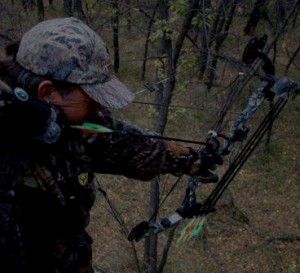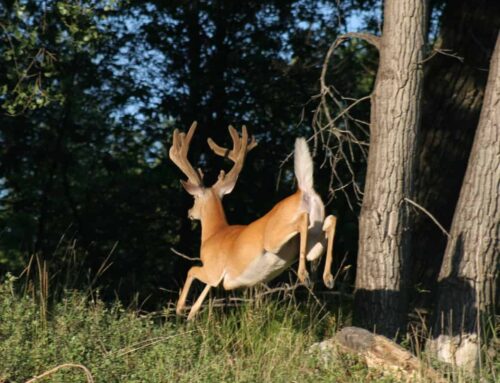TWILIGHT: the soft, scattered light that illuminates the sky when the sun is just below the horizon, either from daybreak to sunrise or from sunset to nightfall. In the afternoon when the sun reaches 18 degrees below the horizon the twilight’s brightness is nearly zero and night begins. When the sun again reaches 18 degrees below the horizon the following daybreak, night ends and morning twilight begins. In either of the twilight periods, the first and last minutes of legal shooting time, light is flat and gray; trees and other objects are silhouetted against the bright skyline, and there are no shadows in the woods.
While either twilight is prime time for bucks to move, it is a tricky time for hunters.
In the gathering gloom late one October afternoon, an 8-point buck thick as a steer rolled out from behind some cedar trees and stopped in front of my stand. I had heard him coming, so I was standing and at full draw when he stopped, bobbed his head and looked up at me with cat-marble eyes. I was frozen still and he was broadside, so all good. I let my draw down and he wandered off.
I would have bet good money the deer was 45 yards away. I’m old-school and hold my shots at whitetails to a self-imposed 35, especially when bucks are on alert and looking up, coiled to duck and twirl at the shot. I’ve lost count of the bucks I’ve watched jump the string, and their incredible speed and agility never ceasing to amaze me.
But I messed up that evening! When I stepped it off on my way out of the woods that night, the buck had been broadside at a cozy 33 yards.
Twilight can trick your depth perception. To me, deer in the low, flat light look farther away than they are, but I have buddies that say to them, animals look closer.
Don’t risk too long of a shot out of your comfort zone, but don’t pass a good shot either. After climbing into your stand, zap landmarks in your shooting lanes with your range finder and confirm those shot distances to memory. (Why I didn’t range distances that October, I can’t say.)
If you’re like most hunters, you like to shoot a bow standing up. So get off your butt and stand, back tight to the tree, for the first or last 20 minutes of twilight. Have your bow at the ready and be super still, moving only your eyes to scan the timber.
If and when a buck rolls in, size his rack as best you can. Trust the range planning you did earlier, and be confident. Draw when you can, lock the correct fiber-optic glow pin in the dark crease behind the buck’s shoulder and put your arrow right there.






